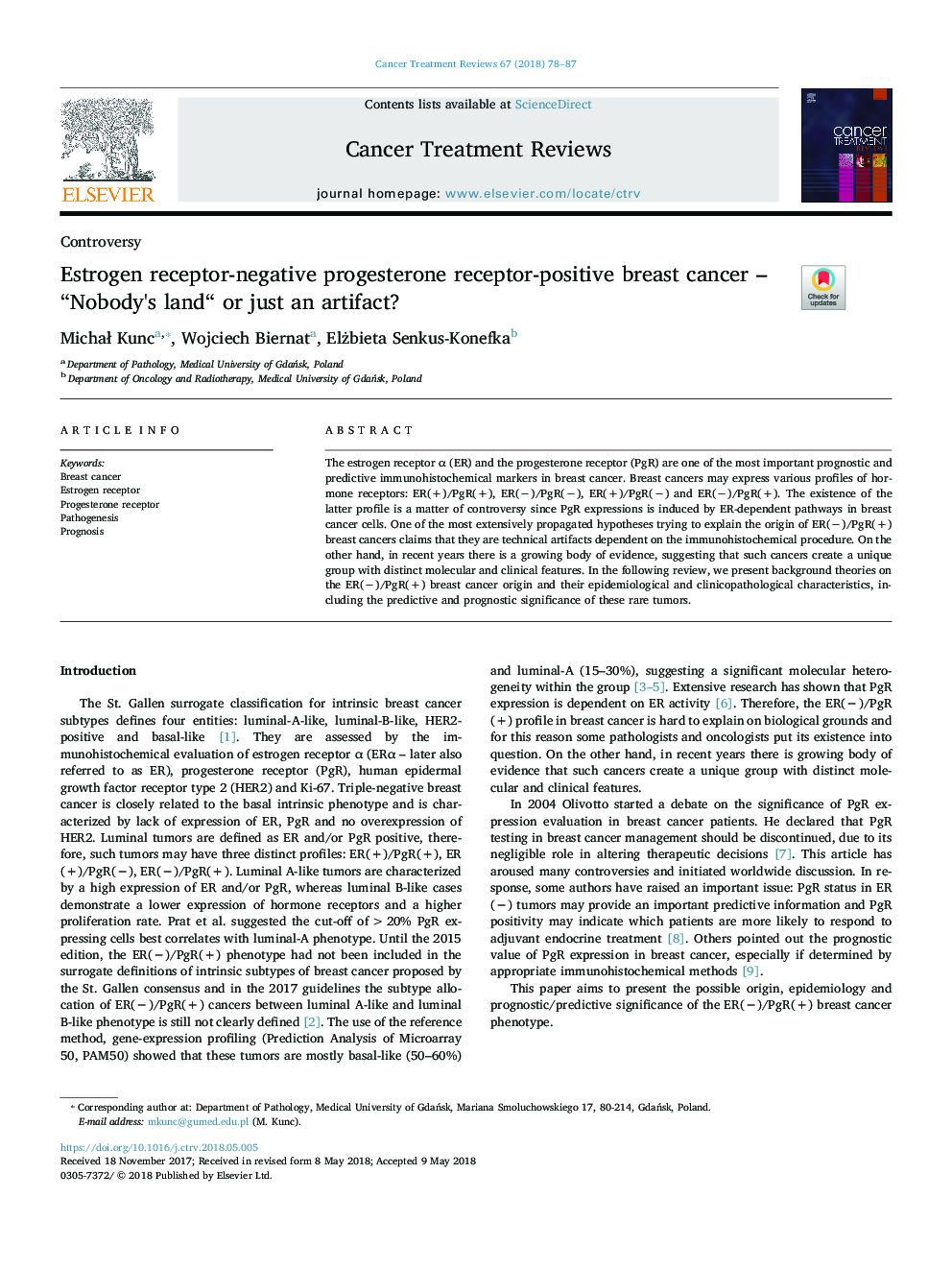| Article ID | Journal | Published Year | Pages | File Type |
|---|---|---|---|---|
| 8785846 | Cancer Treatment Reviews | 2018 | 10 Pages |
Abstract
The estrogen receptor α (ER) and the progesterone receptor (PgR) are one of the most important prognostic and predictive immunohistochemical markers in breast cancer. Breast cancers may express various profiles of hormone receptors: ER(+)/PgR(+), ER(â)/PgR(â), ER(+)/PgR(â) and ER(â)/PgR(+). The existence of the latter profile is a matter of controversy since PgR expressions is induced by ER-dependent pathways in breast cancer cells. One of the most extensively propagated hypotheses trying to explain the origin of ER(â)/PgR(+) breast cancers claims that they are technical artifacts dependent on the immunohistochemical procedure. On the other hand, in recent years there is a growing body of evidence, suggesting that such cancers create a unique group with distinct molecular and clinical features. In the following review, we present background theories on the ER(â)/PgR(+) breast cancer origin and their epidemiological and clinicopathological characteristics, including the predictive and prognostic significance of these rare tumors.
Related Topics
Health Sciences
Medicine and Dentistry
Oncology
Authors
MichaŠKunc, Wojciech Biernat, Elżbieta Senkus-Konefka,
